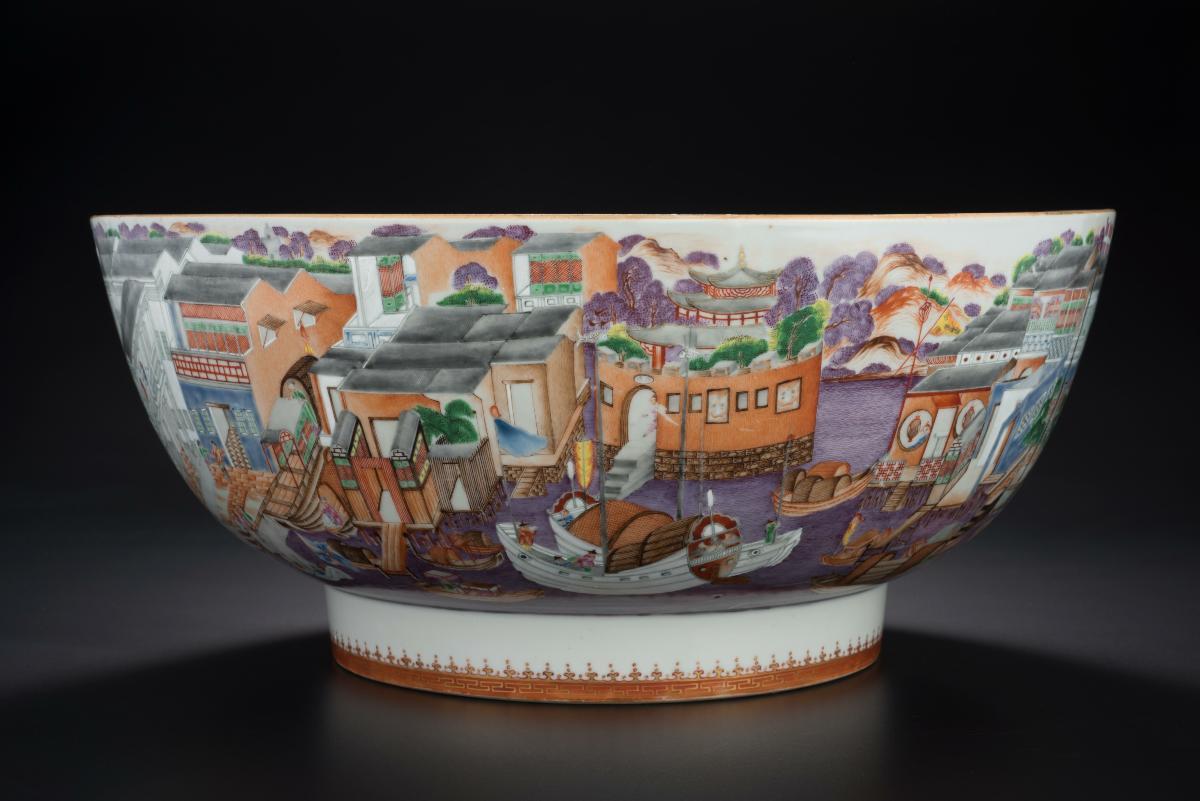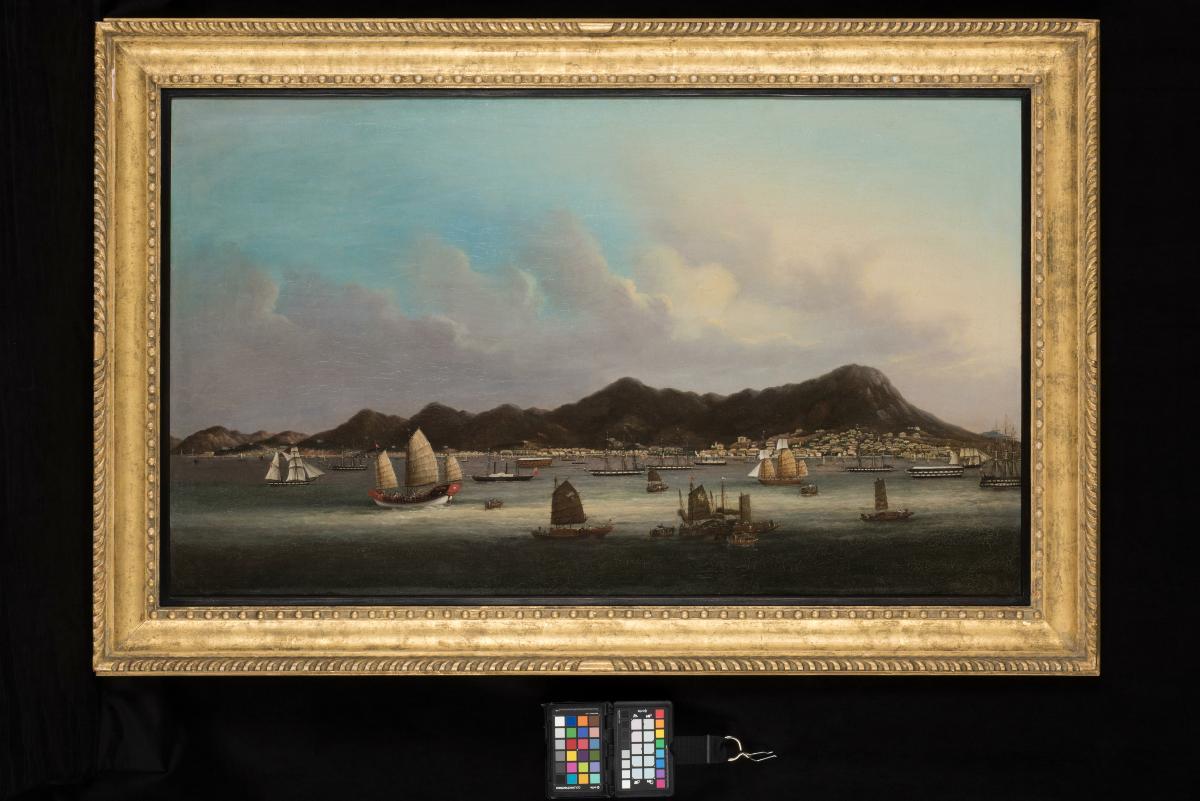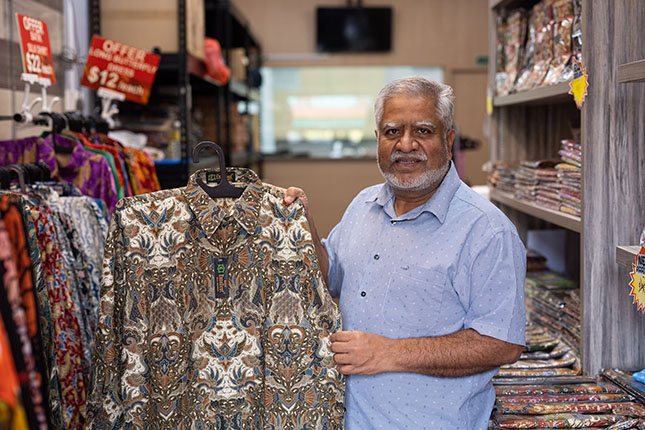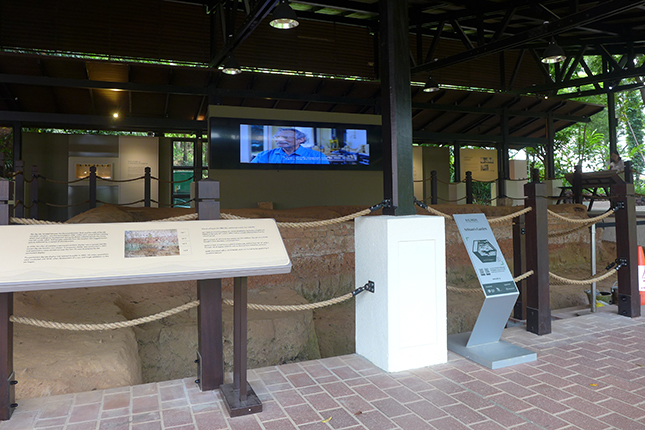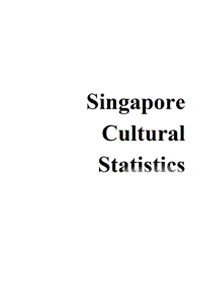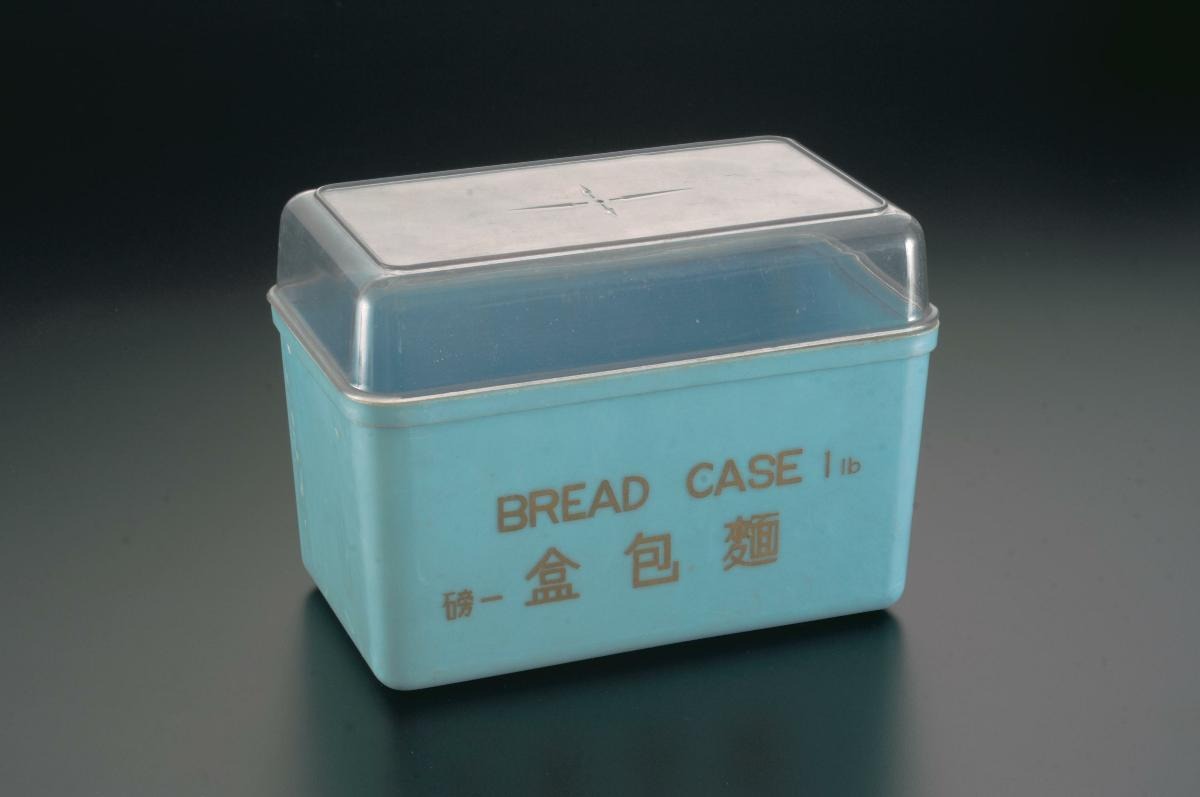Canton "Hong" Bowl, China, c. 1785, porcelain.
Collection of Asian Civilisations Museum.

Porcelain bowls of this type that depict the hongs (行) or trading companies of Western merchants at the port city of Canton (today's Guangzhou) were produced by Chinese artisans for export to Western markets by way of Canton. This piece is a fine example that not only vividly conveys the beautiful scene at Canton, but also documents the trade between China and the West during the 18th and 19th centuries.
Canton is important in the history of global trade because for about 100 years between the mid-1700s and mid-1800s, it was the sole source of Chinese luxury goods such as tea, silks, lacquer and porcelain. The Dutch and British established their ports of Batavia and Singapore in Southeast Asia respectively to take advantage of the Canton trade. These ports functioned as entrepôts for the re-export of Chinese luxury goods to the West.
In 1842, the first Opium War erupted near the port of Canton. In the aftermath and the decades to come, China was forced to sign a series of Unequal Treaties that saw many of its coastal ports—such as Amoy (Xiamen), Foochow (Fuzhou), Shanghai, Hong Kong, and of course, Canton—open up for international trade. It is from these "treaty ports" that Singapore's Chinese population of Hokkiens, Cantonese, Teochew, Hokchiew, Hakka (and others) arrived in the 1800s and 1900s.
This is an extract from "The Singapore Story through 60 objects" written by Kennie Ting, Director, Asian Civilisations Museum and Peranakan Museum & Group Director of Museums, National Heritage Board. This article was first published in Cultural Connections Volume IV 2019 by Culture Academy Singapore.
Learn more about the Hong Bowl in this video





